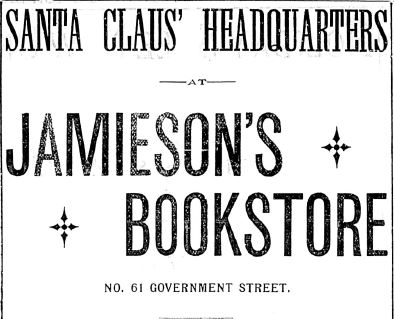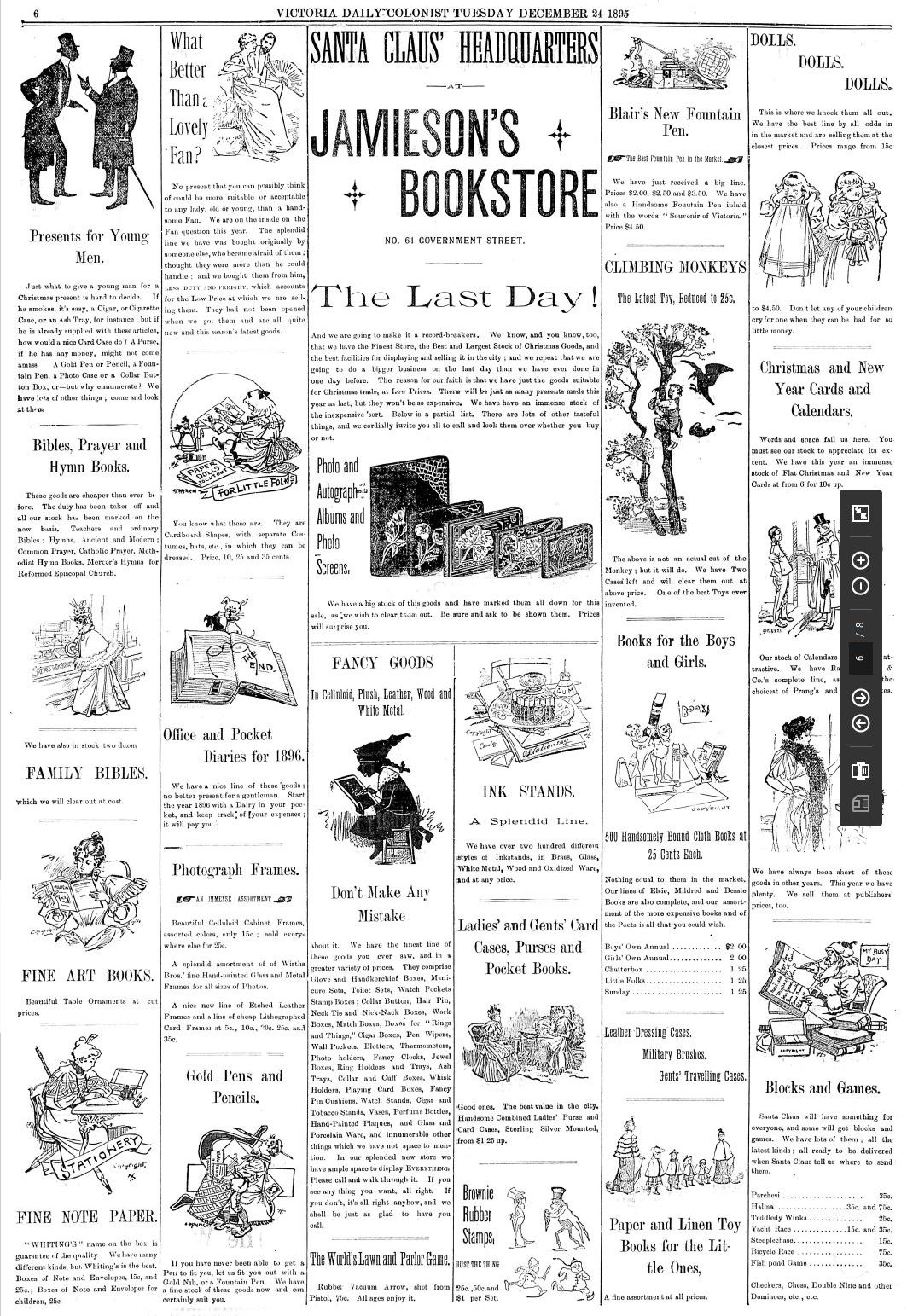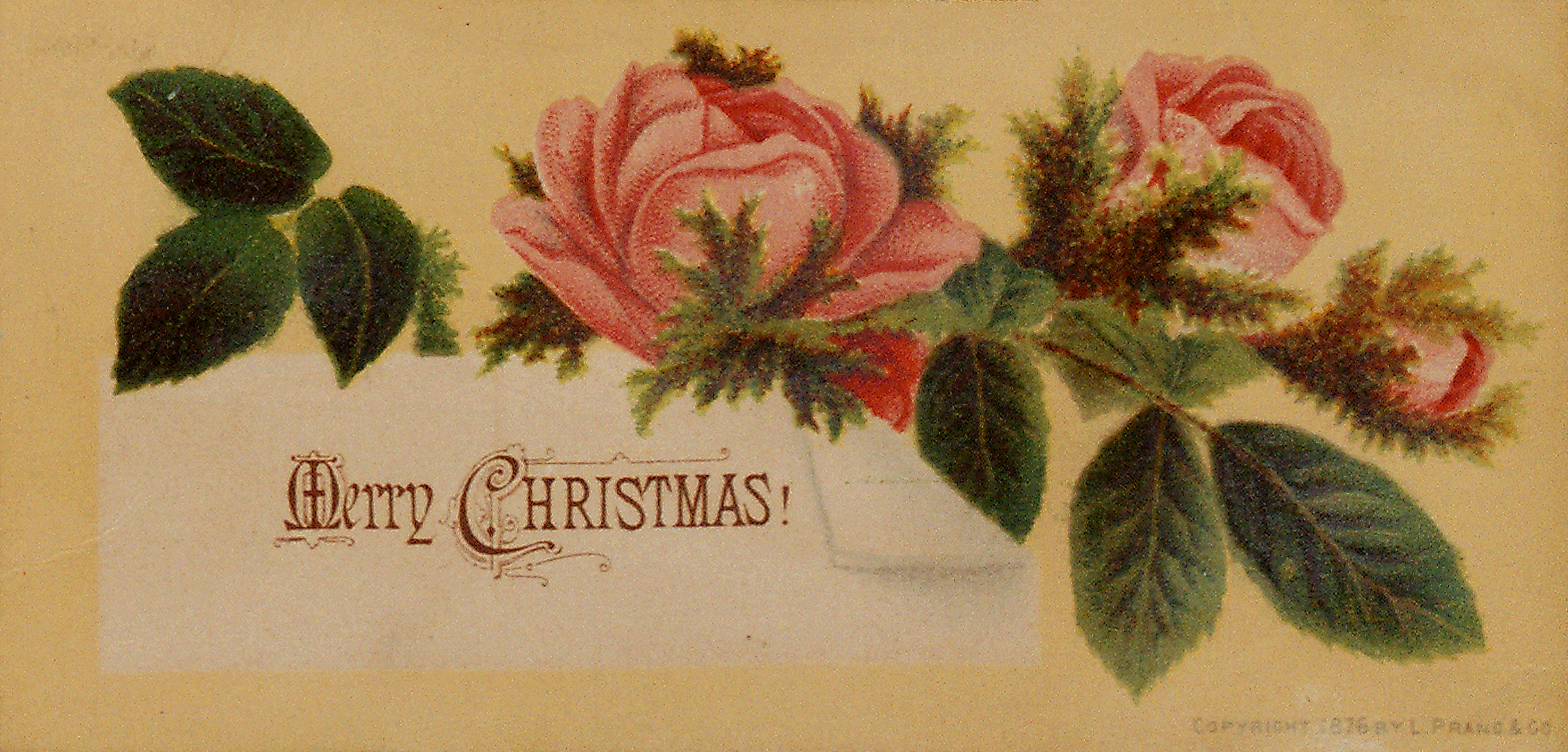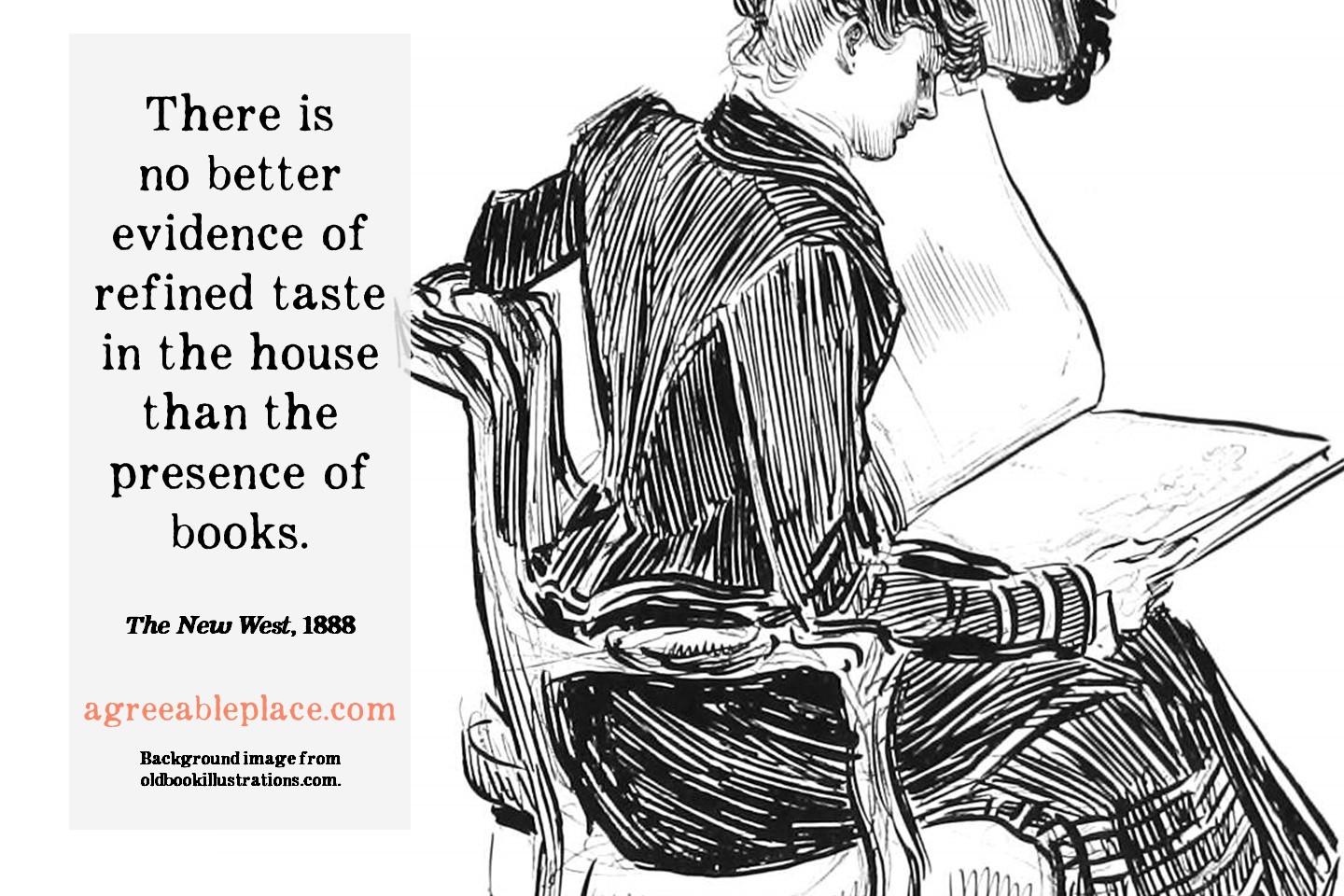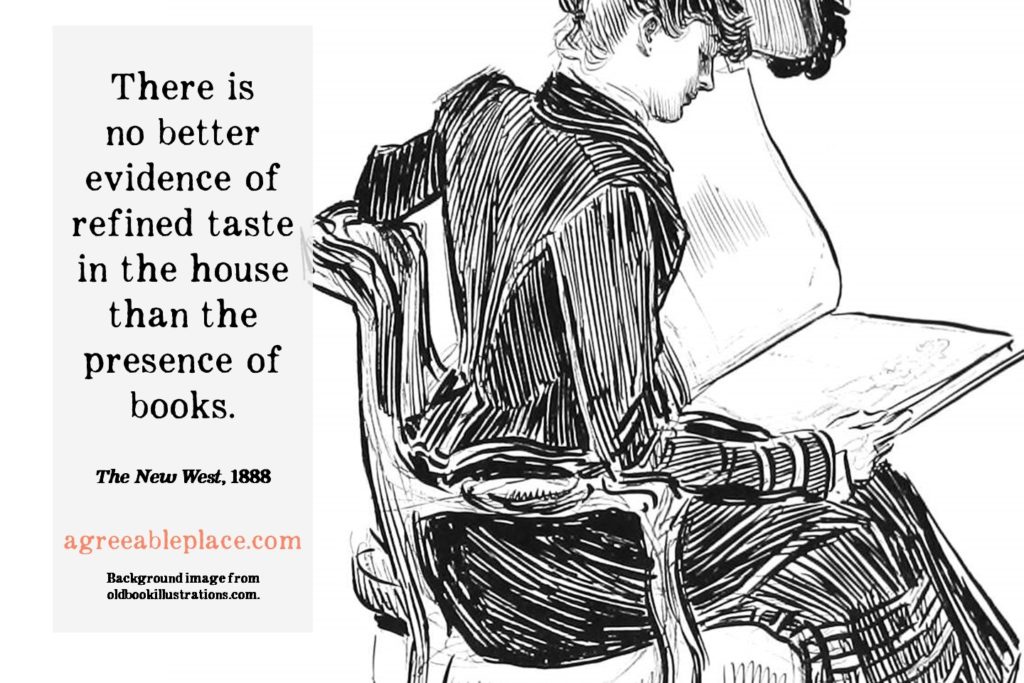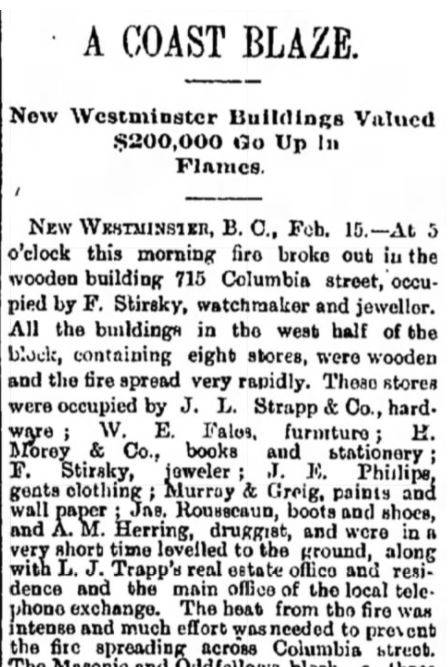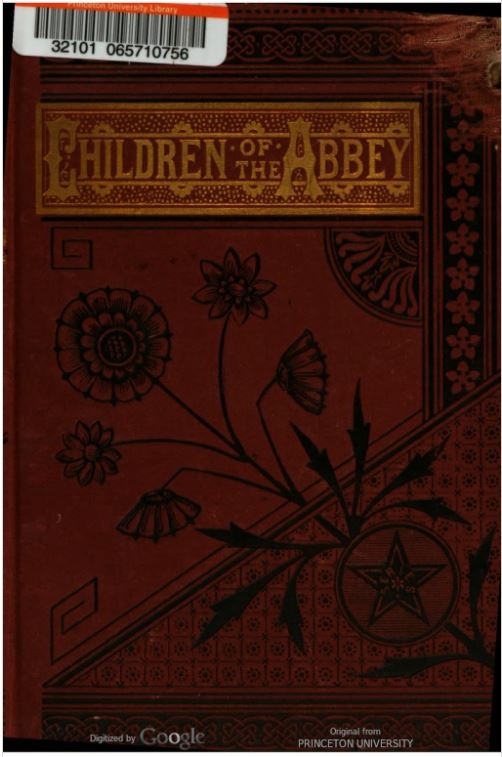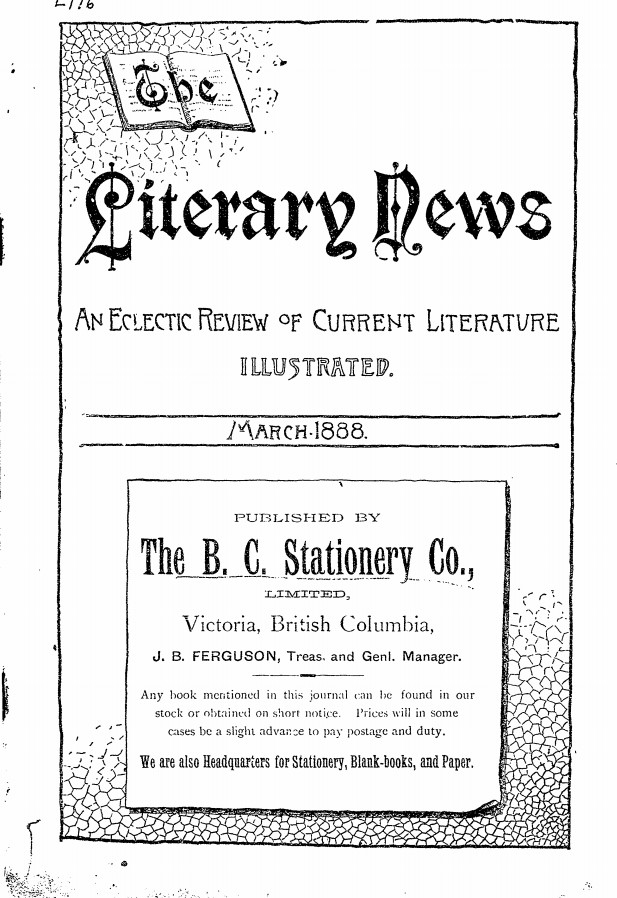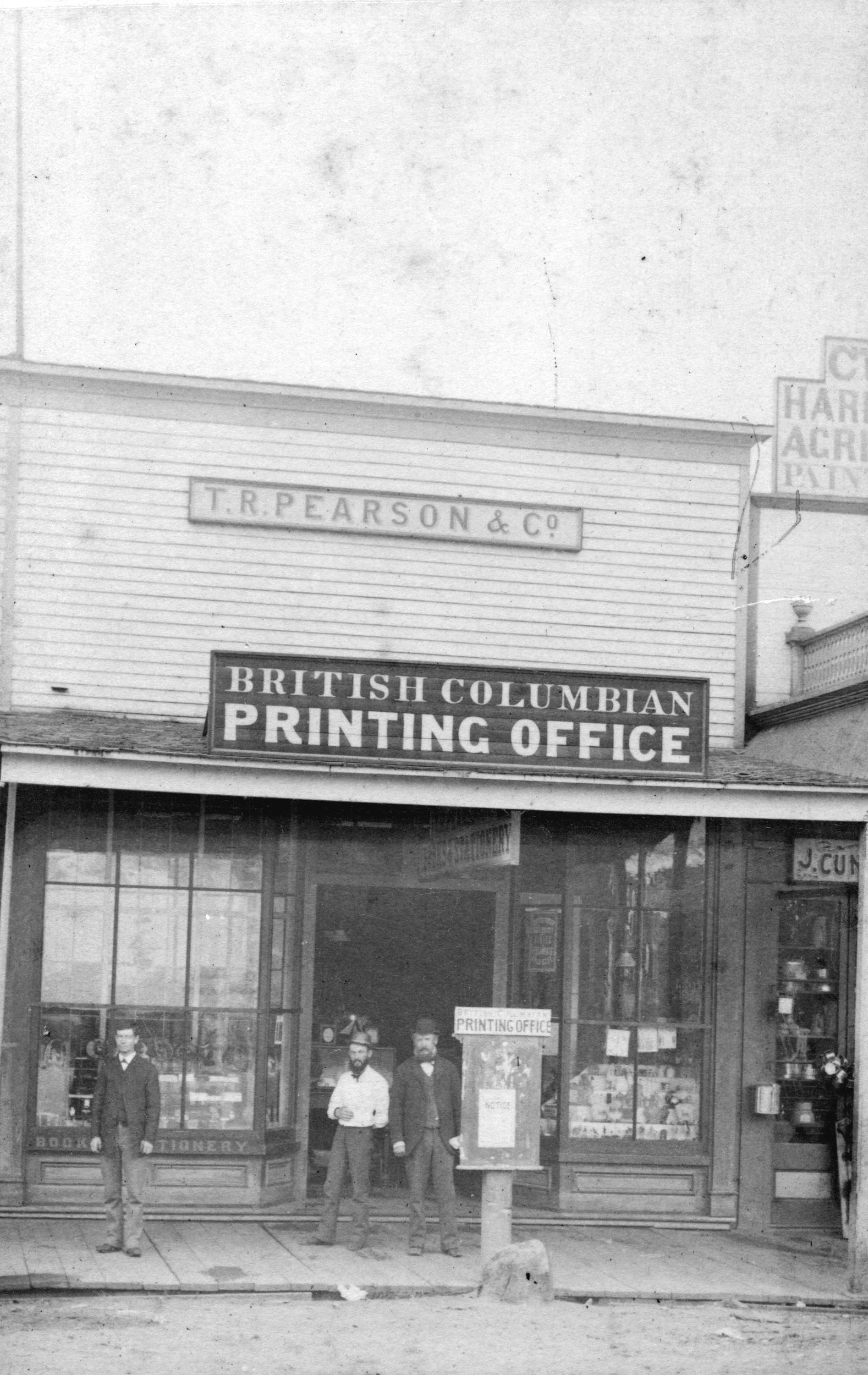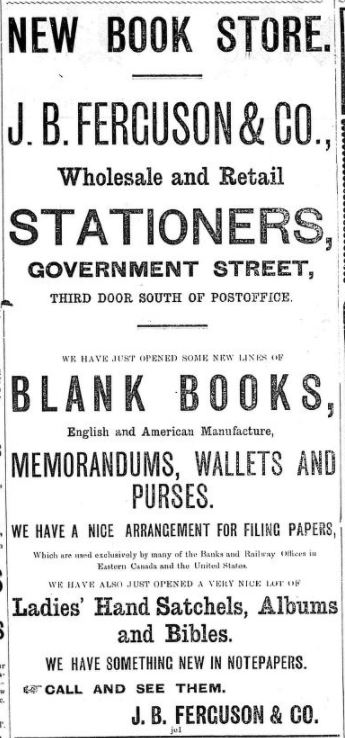This splendid full-page ad is from Robert Jamieson’s bookstore in Victoria, 1895. (Click to enlarge.)
Author: agreeableplace
Christmas at the Nineteenth-Century Bookstore
In Book of Small, her memoir about her childhood in Victoria, Emily Carr recalls the red cardboard sign that Thomas Napier Hibben hung in his bookstore’s window each December, its “Merry Christmas” message written with cotton wool.
In nineteenth-century Victoria (as now, judging by the lineup at my local bookstore the other day), Christmas shoppers flocked to bookstores for gifts. In addition to books, they were drawn to all the fancy goods and “requisites necessary in a first class stationery store,” as the following article describes:
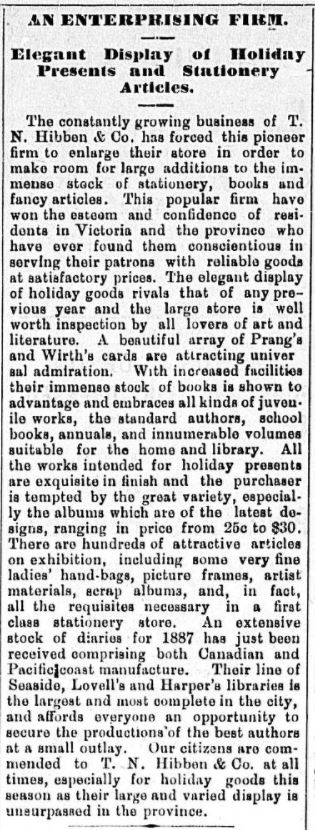
Among the attractions were a fairly new item at the time: Christmas cards. The Prang cards mentioned above were those of Louis Prang, the Boston-based printer who is credited as the father of the American Christmas card when he became the first American publisher of Christmas cards in 1875.
Diaries for the upcoming year were another popular, heavily advertised Christmas gift item. Selections numbered in the dozens, with many bound in fine leather, edged in gilt, sized for a pocket, and complete with additional compartments for bills and calling cards.
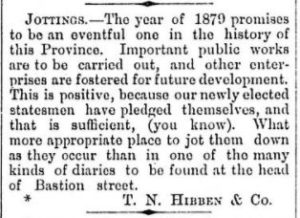
(Feature image for this blog post on the home page is from http://blog.nyhistory.org/prang/, Christmas card, L. Prang and Co., 1876. PR 31, Bella C. Landauer Collection)
Evidence of Refined Taste
Destroyed by Fire: Henry Morey, Part 2
New Westminster’s Henry Morey was in his fifth year of business as a bookseller and stationer when disaster struck on February 15, 1891 (1).
At 5 a.m., live coals in an ash box suddenly flamed up in the rear room of watchmakers and jewellers Stirsky & Son at 715 Columbia Street. A patrolling police constable soon noticed the smoke billowing from Stirsky’s store, but no water was readily available to snuff out the fire.
Finding ample fuel in the wooden buildings housing Stirsky’s and adjacent stores, the fire soon consumed the west half of the block. Within the hour, eight stores, including Morey’s at 713 Columbia, were levelled to the ground.
“Within the hour, eight stores, including Morey’s at 713 Columbia, were levelled to the ground.”
The fire also started spreading in the other direction along Columbia toward the real estate office of T.J. Trapp at the corner with Lorne Street. Adjacent to Trapp’s store was the grand Masonic and Oddfellows block fronting on Lorne, said to be one of the finest buildings in the province.
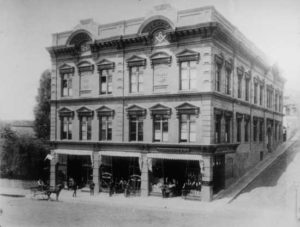
At 6:30 a.m., “a terrific explosion occurred caused by powder stored in the cellar of Trapp’s store. This explosion smashed all the windows in the neighborhood and shook up the Masonic block so badly that the fire got a new hold despite the hard work of the firemen. This magnificent building was soon ablaze inside and was completely gutted, together with its contents” (2).
At 11:00 a.m., part of the north wall of the Masonic block caved in. Falling bricks hit a passing hack driver, Fred McKinnon, breaking both of his legs and one arm. Otherwise, no one else was seriously injured—which seems miraculous considering the explosives stored in Trapp’s cellar.
The property damage was significant, however. Losses were estimated at $175,000 to $200,000, with insurance covering about half of that. What had started out as live coals carelessly left in an ash box turned out to be “the largest and most destructive conflagration ever seen in Westminster” to that point. “Never in the history of Westminster did our principal thoroughfare look so completely demoralized and desolate,” reported the local newspaper (3).
“Never in the history of Westminster did our principal thoroughfare look so completely demoralized and desolate.”
Morey suffered a total loss of his store and inventory, with insurance coverage of only $2,000. And yet, by April, he was up and running again, boasting in newspaper ads of new stock and new premises at the corner of Douglas and Columbia opposite the Central Hotel.
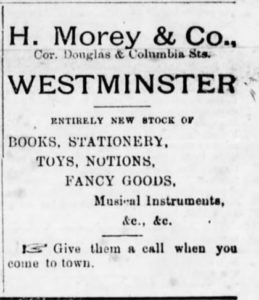
Notes
(1) The account of the fire in this post is drawn from the Manitoba Free Press (February 16, 1891): 1; and the Daily Colonist (February 17, 1891): 3.
(2) Manitoba Free Press (February 16, 1891): 1.
(3) Daily Colonist (February 17, 1891): 3.
***
Henry Morey: Kicking off a Century+ of Bookselling, Part 1
When twenty-three-year-old Henry Morey established H. Morey & Company in New Westminster in 1886, little did he know that he was starting a bookselling and stationery enterprise that would, through a series of owners, last for more than a century.
“Little did [Morey] know that he was starting a bookselling and stationery enterprise that would, through a series of owners, last for more than a century.”
A Musical Youth
Born in New Westminster in December 1862, Henry was the only son of Jonathan and Frances Morey. Jonathan was a sergeant in the Royal Engineers, arriving in New Westminster in 1859 and later serving as the city’s police chief. The family also included four daughters.
In his youth, Henry Morey went to Leipzig, Germany, to study music, having “exhibited a marked talent in music” and a “fine tenor voice” (1). “It is no secret that this young man has given proof of more than common musical talent, and we believe one of the objects of his visit is to put himself in a position to pursue musical studies to the best advantage,” praised the local newspaper when Morey departed for Europe (2).
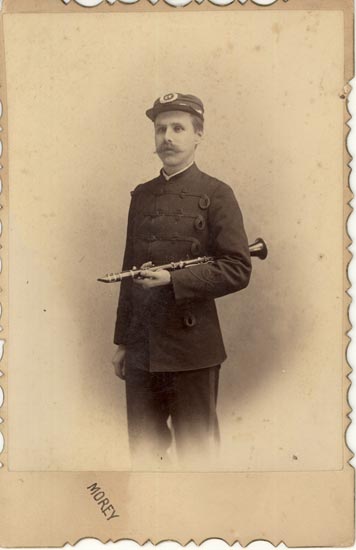
Entering the Printing and Book Trade
After he returned to New Westminster, Morey joined the Mainland Guardian as a printing apprentice (3).
Then, in 1886, the young man established himself in the business that would define the rest of his working life: H. Morey & Company, bookseller, stationer, and job printer. John Slater Hainsworth was listed initially as a printer, and then as a partner, in the enterprise (4).
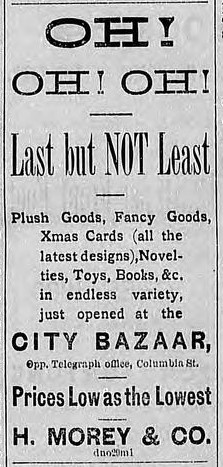
By 1889, the company was at 77 Columbia Street and seemed to be thriving:
“H. Morey & Co. claim, with considerable grounds for justification, to have the largest stock of toys in the city…Albums are one of Morey & Co’s extra strong displays; they are in wonderful variety. In hand painted cards, plush goods, smoker’s sets, tea sets and fancy stationery, papetries, the house makes a grand showing. Those inclined to athletics and ‘the manly’ can here get a natty little pair of swinging clubs or a fine set of boxing gloves…Individual cups and saucers finely decorated…also presentation volumes of Shakespeare, Dante, and other great works….One of their special lines in particular is musical instruments of which they have an immense variety at modest prices” (5).
But just as we’ve seen with several other early BC booksellers (like Seth Tilley in Vancouver and John Ferguson in Victoria), fire soon became Henry Morey’s worst nightmare, levelling his store and forcing him to start all over again. I’ll pick up from there next time.
Notes
(1) British Columbia from the Earliest Times to the Present: Biographical, Vol. 4 (Vancouver, Portland, San Francisco, Chicago: S.J. Clarke Publishing Company, 1914), 503; Henry Morey obituary, Vancouver Sun (May 16, 1936): 1.
(2) British Columbian (May 2, 1885): 3.
(3) Morey obituary, Vancouver Sun.
(4) British Columbia Directory (Victoria: E. Mallandaine and R.T. Williams, 1887), 180. Hainsworth was listed as a partner by 1899, but it’s unclear when he took on an ownership interest.
(5) British Columbian (December 23, 1889): 1.
***
At the Bookstore, 1887: Bestsellers for Sixty Cents
While researching John Bowerman Ferguson and the BC Stationery and Printing Company, I came across this ad, which illuminates (albeit fuzzily) what readers could find on the shelves of BC bookstores in 1887:

For sixty cents per volume, readers could walk away with now-classic works by Charles Dickens, Johnathan Swift, Victor Hugo, and Sir Walter Scott.
They could also find authors less familiar today (at least to me), like Jane Porter, Regina Marin Roche, Anne Bowman, Holme Lee, and Jane R. Sommers (humph…the women seem to be the ones whom history let fade into the mist).
All book images above are from HathiTrust, where modern-day readers can find and freely download most, if not all, of the books in the BC Stationery Company list.
British Columbia Stationery and Printing Company
Now that I’ve introduced John Bowerman Ferguson, Thomas Robson Pearson, and David Robson, three of the founding partners in the British Columbia Stationery and Printing Company (J.A. Hart was the fourth), let’s continue the story about this firm.
A Promising Start…
Beginning in May 1886 with Pearson’s and Ferguson’s existing book and stationery stores in New Westminster, Vancouver, and Victoria, Robson’s British Columbian newspaper and printing operation in New Westminster, and $50,000 in capital (1), BC Printing and Stationery seemed strongly positioned to compete in the province’s burgeoning bookselling and publishing industry.
…Followed by a Series of Unfortunate Events
But only three weeks after the new firm was incorporated, the Great Vancouver Fire of June 13, 1886, destroyed the company’s Vancouver branch —the same inferno that devastated Seth Tilley’s book and stationery store. BC Stationery and Printing was located on Water Street adjoining the Granville Hotel, and its losses were estimated at $5,750 (2).
Just like Tilley, the firm wasted no time in rebuilding, this time on Cordova Street.
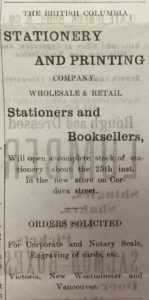
Just as things were settling down in Vancouver, another fire, this one on September 1 in Victoria, destroyed the company’s store on Government Street.
Fortunately, much of the firm’s $25,000 worth of stock was removed as the blaze spread, and insurance partially covered the rest (3). “[The company] will resume business in a few days, and doubtless do a good trade, as they have done heretofore,” declared Books and Notions (4).
And at first it seemed this prediction was right. Through 1887 and into 1888, BC Stationery and Printing’s enthusiastic ads in the Daily Colonist and elsewhere gave no signs that the company was in any distress.
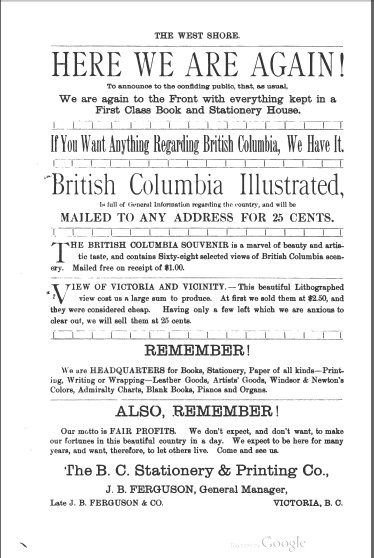
Bankruptcy
But the company was, indeed, in financial difficulty. In January 1887, the partnership between Ferguson, Pearson, and Robson broke apart when Pearson withdrew from the firm, taking his Vancouver and New Westminster branches with him. BC Stationery and Printing also lost the British Columbian and David Robson when the newspaper was sold to a joint stock company controlled in New Westminster (5).
Ferguson tried to press on alone, but in the spring of 1888, BC Stationery and Printing Company declared bankruptcy. Ferguson issued a statement saying that the losses from the Vancouver and Victoria fires in the company’s first year of business, “some serious losses through our jobbing trade,” and “heavy expenses attendant upon the closing up of two branches” had left the firm unable to meet its financial obligations (6).
T.N. Hibben & Co., the company’s staunchest competitor in Victoria, bought the stock of the bankrupt firm at 57½ cents on the dollar, and Ferguson sold what was left of the business to Robert Jamieson (7).
As for John Bowerman Ferguson…
John Ferguson left Victoria in November 1888 and headed back to Winnipeg, where he once again opened a book and stationery store. But again, bad fortune seemed to follow him. First came the death of his wife, Harriett, in November 1891. And then came another bankruptcy, which prompted Books and Notions to conclude that “Mr. Ferguson has a poor record” (8).
But Ferguson didn’t give up. In 1894, he not only remarried, to Helen Walsh, but also reentered the book trade, incorporating Ferguson & Co. once again (9). In 1895, he sold the book and periodical side of this business to Alex Taylor and carried on as a wholesaler of wrapping papers, printing and lithographing papers, and office and school supplies (10).
Then in August 1896, Ferguson left Winnipeg—and the book and stationery business—for good. Over the next dozen or so years, he participated in some mining ventures in the Kootenays, was manager and local treasurer for an American life insurance company in Vancouver, was general manager of the Western Oil and Coal Company, and was involved in the Stave Lake Power Company with Charles Hibbert Tupper (a member of Parliament and son of former prime minister Charles Tupper Sr.), among others (11).
By 1911, Ferguson had returned to his home province of Ontario. He died there in 1919 and is buried in Mount Pleasant Cemetery in Toronto (12).
Notes
(1) “The B.C. Stationery and Printing Company,” Daily Colonist (May 22, 1886): 3.
(2) “Losses,” Vancouver Weekly Herald (June 22, 1886): 2.
(3) “Fire on Government Street,” Daily Colonist (September 1, 1886): 3.
(4) Books and Notions (September 1886): 28.
(5) “The British Columbian Printing Company,” Daily British Columbian (January 28, 1887): 2.
(6) The Commercial, vol. 6, no. 32 (April 30, 1888).
(7) The Commercial (April 30, 1888); Books and Notions (December 1888): 87.
(8) “Ferguson & Co.’s Failure,” Books and Notions (December 1893): 6.
(9) “Wedding Bells,” Manitoba Morning Free Press (May 9, 1894): 6; Books and Notions (June 1894): 14.
(10) American Stationer, vol. 38 (1895).
(11) “Off for Rossland,” Winnipeg Tribune (August 26, 1896): 5; Vancouver Daily World (December 2, 1897): 8; “May Prove an Ore Gusher,” Daily Colonist (December 30, 1905): 6; “Extension Granted,” Vancouver Daily World (January 23, 1902): 2.
(12) Memorable Manitobans: John Bowerman Ferguson; Findagrave.com.
***
There Is Not a More Interesting Occupation than That of the Bookseller
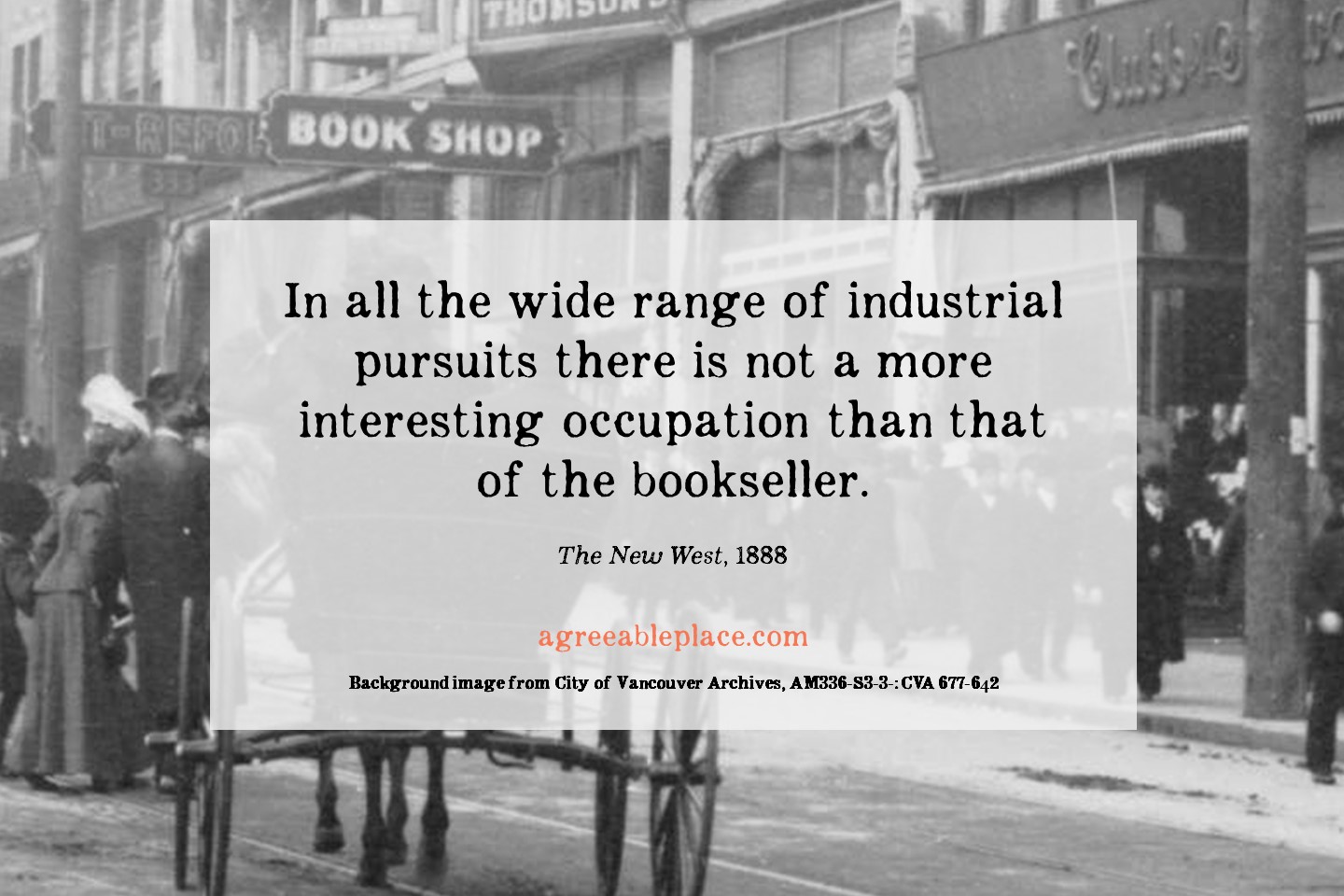
***
Thomas Robson Pearson: New Westminster and Vancouver Bookselling Pioneer
Before I continue the story of the British Columbia Stationery and Printing Company and John Bowerman Ferguson, let’s meet the other bookselling partner in the venture: Thomas Robson Pearson.
Establishing T.R. Pearson & Co., New Westminster
Born in 1858 in Oshawa, Ontario, Pearson came to Victoria in 1877, and then to New Westminster in 1879 (1).
Soon after settling in New West, Pearson entered the book and stationery trade, establishing T.R. Pearson & Co. on Columbia Street.
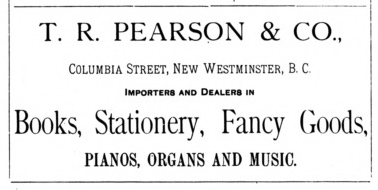
Connection to the Robsons
Pearson’s middle name, Robson, came from his mother Isabella’s family. Isabella Robson Pearson was the sister of John, David, and Rev. Ebenezer Robson, all of whom were actively involved in the development of BC in the province’s early days.
John Robson, of course, was premier of British Columbia from 1889 to 1892. But before becoming a politician, John was a journalist, serving as editor of the original British Columbian newspaper in New Westminster in the early 1860s, and then as publisher of the new British Columbian from 1882 to 1883. David Robson was also involved in the reincarnation of the newspaper, and when John left to pursue his political career in Victoria in 1883, David took over management of the paper (2).
It is unclear whether Pearson and his uncles were partners in T.R. Pearson & Co. and/or the British Columbian (a February 1883 notice in American Stationer suggests that Pearson and John Robson might have been partners in the book and stationery company [3]), but the two enterprises shared the same premises, as seen in this photo from the City of Vancouver Archives (4):
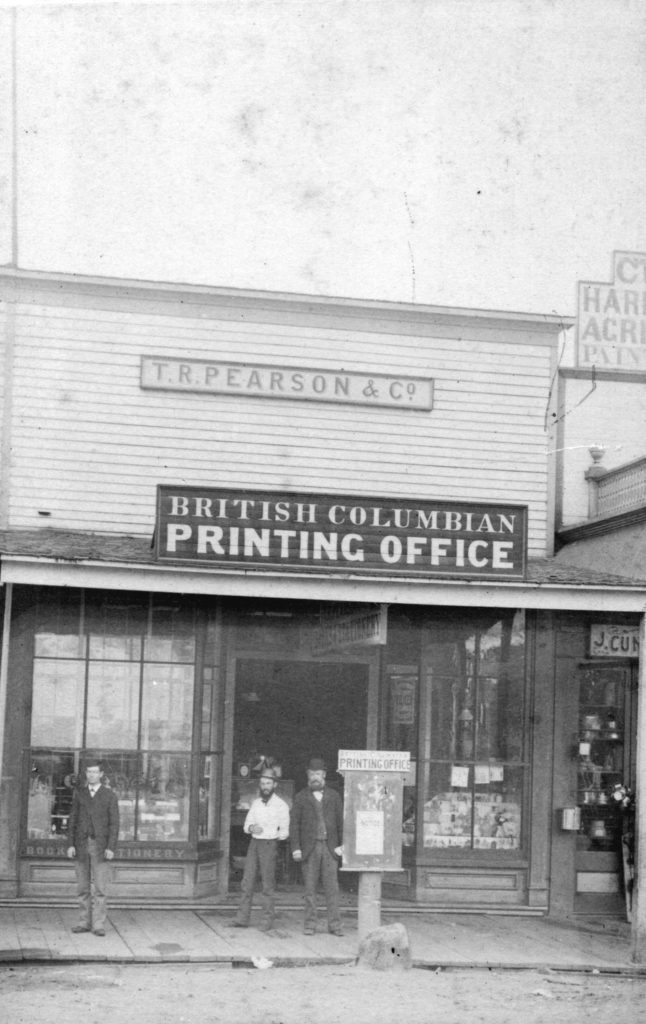
Expansion to Vancouver and Formation of BC Stationery and Printing Company
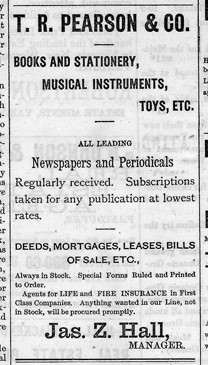
By January 1886, T.R. Pearson & Co. had expanded to Vancouver (actually still called Granville at the time) (5), and then in May, Pearson folded his New Westminster and Vancouver stores into the newly formed British Columbia Stationery and Printing Company. David Robson also partnered in the venture, bringing in his British Columbian Printing Company. And J.B. Ferguson brought in his book and stationery firm in Victoria.
As I’ll cover in my next post, the BC Stationery and Printing Company turned out to be relatively shortlived. So was the remainder of Thomas Robson Pearson’s bookselling career.
The End of Pearson’s Bookselling Days
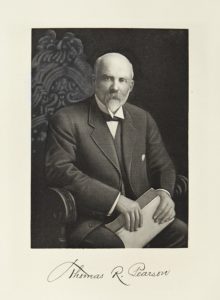
In 1887, Pearson married Edith Eleanor Major, daughter of C.G. Major (who was brother-in-law to George Clarkson, a New Westminster bookseller in the late 1860s—I’m telling you, the connections between these early booksellers form an intricate web!).
Also in 1887, Pearson withdrew from the BC Stationery and Printing Company, sold his New Westminster bookstore to David Lyal (6), and entered a partnership with his new father-in-law. Operating as Major & Pearson, the firm dealt mainly in real estate and insurance. When the Dominion Trust Company was established in 1906, Major & Pearson was incorporated into it, and Pearson became a director and manager of the new company (7).
Pearson was widely esteemed in New Westminster business and social circles, and he and Edith had three children. He died in 1947 at the age of eighty-nine (8).
Notes
(1) Biographical information about Pearson is mainly from British Columbia Pictorial and Biographical, vol. I (Winnipeg, Vancouver, and Montreal: S.J. Clarke Publishing Co., 1914), 289–295.
(2) From description of the Columbian Company Fonds at the New Westminster Archives.
(3) American Stationer (February 22, 1883): 263.
(4) The City of Vancouver Archives dates the photo as 189_, but I believe this is an error, as T.R. Pearson & Co. was no longer in operation after 1887.
(5) Ads in the British Columbian for T.R. Pearson & Co. starting in January 1886 show “New Westminster and Granville” as the company’s locations.
(6) “Announcement: Change of Business,” Daily British Columbian (March 1, 1887): 2.
(7) British Columbia Pictorial and Biographical, vol. I., 293-294.
(8) “T.R. Robson of Royal City Dies at 89,” The Province (November 24, 1947): 2.
***
John Bowerman Ferguson: BC Bookseller with a Winnipeg Connection
I was in Winnipeg (my hometown) for a few weeks this summer, and that got me thinking about a BC bookseller with a Winnipeg connection: John Bowerman Ferguson.
Part of the BC bookselling scene from 1885 to 1889 in Victoria and Vancouver, Ferguson was originally from Ontario. But before establishing himself in BC, he spent close to a decade in Winnipeg, initially as a school teacher and then principal at the Central School from 1876 to 1882 (1), and then as a partner in Parsons & Ferguson.
Building on the wholesale stationery business started by Silas R. Parsons in 1878, Parsons & Ferguson not only dealt in stationery, but also acted as agents for the sale of mining stocks, farms, and other property.
In March 1884, Ferguson’s intention to move to Victoria was announced in the British Colonist. Calling Ferguson “a leading stationer of Winnipeg,” the Colonist noted that he had leased the building formerly known as the Brunswick on Government Street and would soon be opening a “first-class stationery and fancy goods establishment” (2).
Located at 325 Government, three doors south of the post office, J.B. Ferguson & Co. opened on May 31, 1884, with an initial stock of books, stationery, and fancy goods valued at $18,000 (3). Later that same year, Ferguson raised his market profile by publishing Illustrated British Columbia, a book of lithographic prints of Victoria.
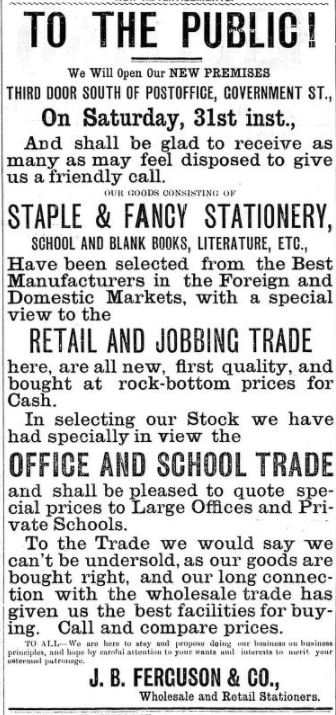
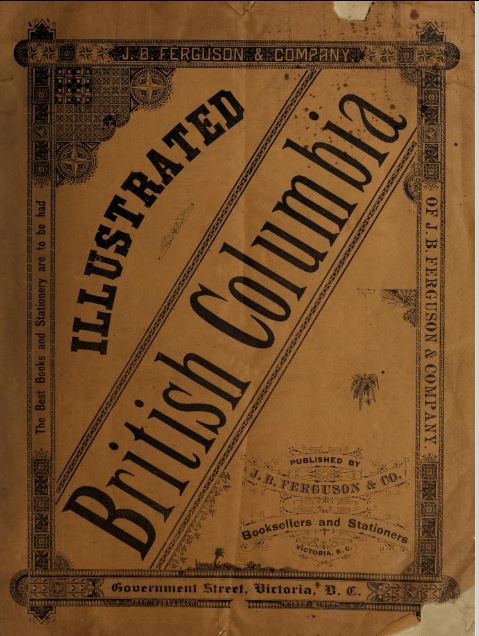
In May 1886, Ferguson took a huge competitive step in the BC bookselling scene when he partnered with Thomas Robson Pearson, David Robson, and J.A. Hart in forming the British Columbia Stationery and Printing Company. The new company absorbed Ferguson’s Victoria concern as well as T.R. Pearson & Co. in New Westminster and Vancouver.
“All the gentlemen are practical stationers and full of energy, and we predict for the new organization a bright and very prosperous future,” declared the Daily Colonist (4).
A series of setbacks, however, would challenge this prediction and ultimately prompt Ferguson to move back to Winnipeg. I’ll pick up from there next time.
Notes
(1) Memorable Manitobans: John Bowerman Ferguson.
(2) “The Brunswick Leased,” Daily Colonist (March 28, 1884).
(3) Books and Notions (December 1884): 78.
(4) “The B.C. Stationery and Printing Company,” Daily Colonist (May 22, 1886): 3.
***
